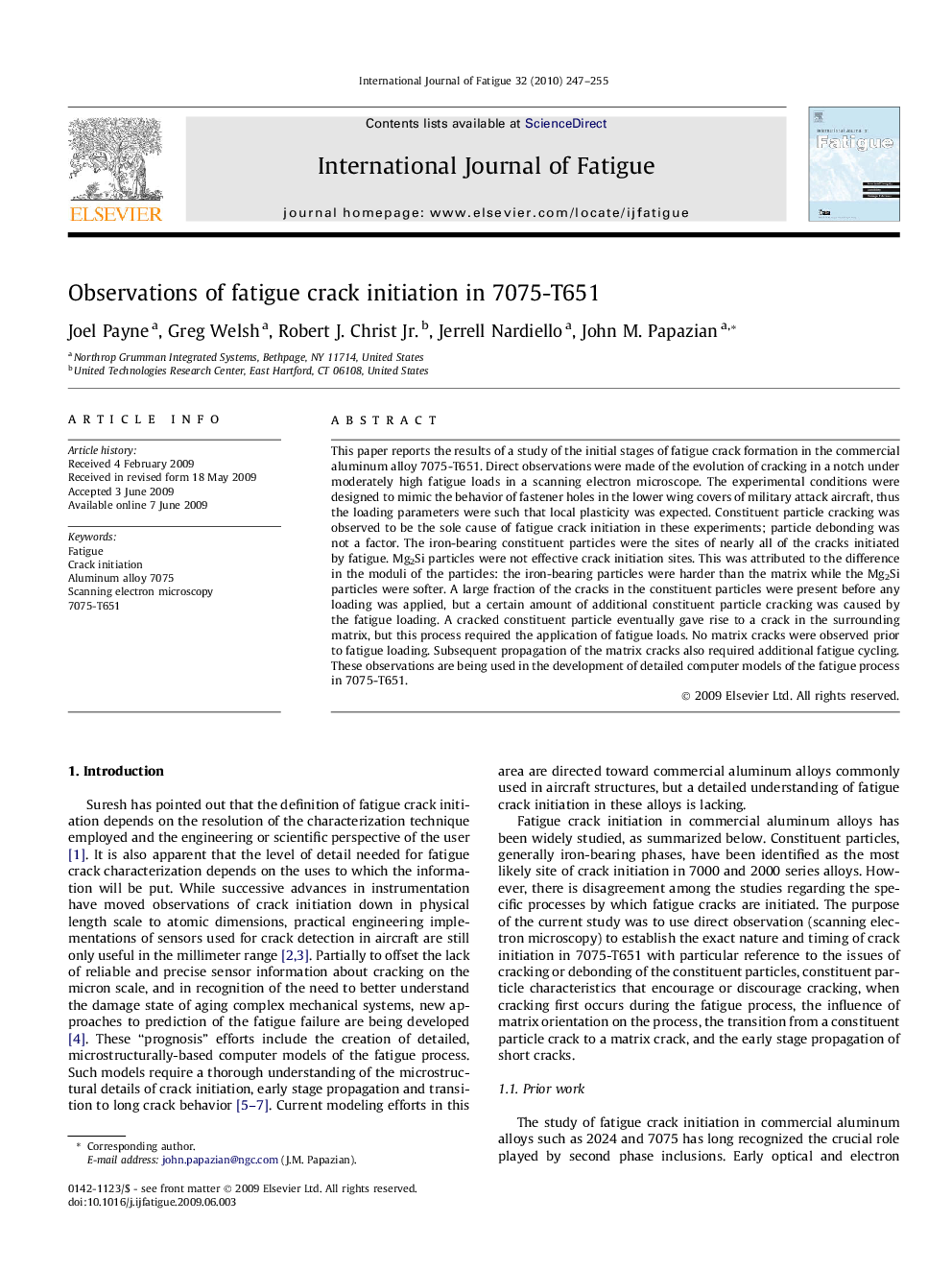| Article ID | Journal | Published Year | Pages | File Type |
|---|---|---|---|---|
| 775598 | International Journal of Fatigue | 2010 | 9 Pages |
This paper reports the results of a study of the initial stages of fatigue crack formation in the commercial aluminum alloy 7075-T651. Direct observations were made of the evolution of cracking in a notch under moderately high fatigue loads in a scanning electron microscope. The experimental conditions were designed to mimic the behavior of fastener holes in the lower wing covers of military attack aircraft, thus the loading parameters were such that local plasticity was expected. Constituent particle cracking was observed to be the sole cause of fatigue crack initiation in these experiments; particle debonding was not a factor. The iron-bearing constituent particles were the sites of nearly all of the cracks initiated by fatigue. Mg2Si particles were not effective crack initiation sites. This was attributed to the difference in the moduli of the particles: the iron-bearing particles were harder than the matrix while the Mg2Si particles were softer. A large fraction of the cracks in the constituent particles were present before any loading was applied, but a certain amount of additional constituent particle cracking was caused by the fatigue loading. A cracked constituent particle eventually gave rise to a crack in the surrounding matrix, but this process required the application of fatigue loads. No matrix cracks were observed prior to fatigue loading. Subsequent propagation of the matrix cracks also required additional fatigue cycling. These observations are being used in the development of detailed computer models of the fatigue process in 7075-T651.
